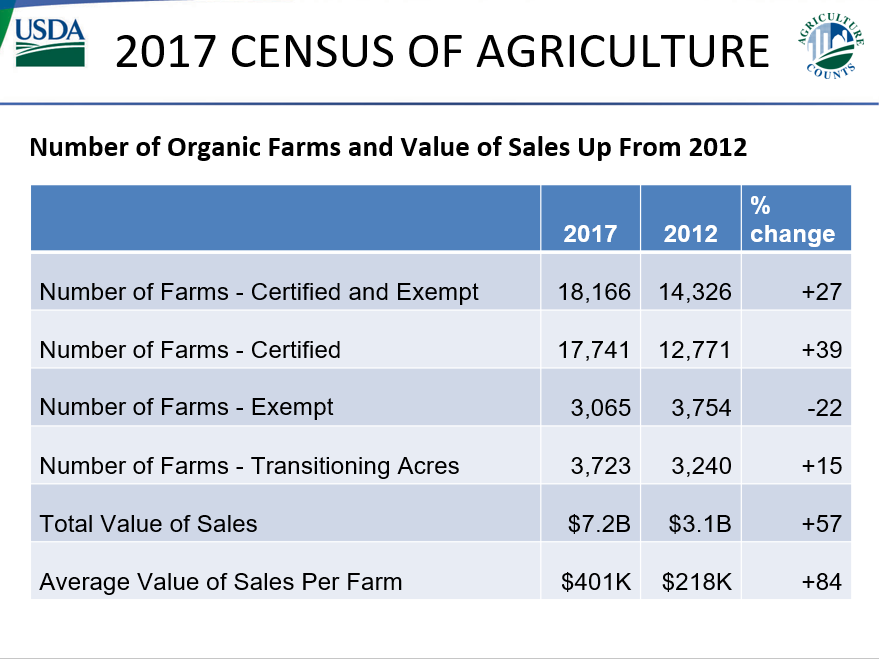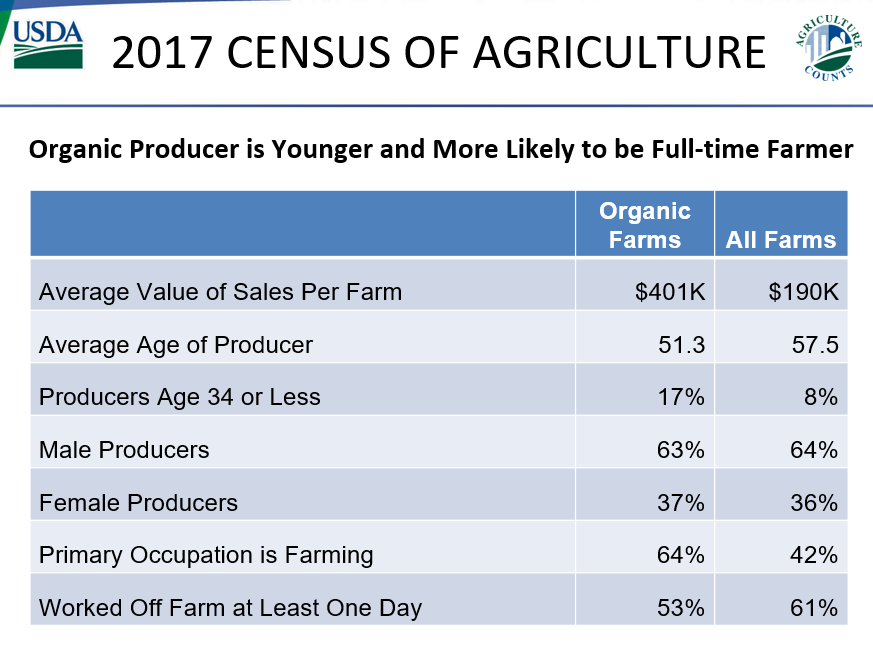By Melody Meyer
After surveying nearly three million farms and ranches across the country, the USDA’s National Agricultural Statistics Service (NASS) recently released the 2017 Census of Agriculture results, which showed an increase in the consolidation of farms, and an overall decline in the number of farms and farmland.
Organic agriculture, however, emerged as a shining light, showing growth and vitality, as well as outstanding opportunities for younger farmers.

(graphic courtesy of USDA)
In total, the Census of Agriculture counted 18,166 organic farms (certified and exempt) in 2017, a 27 percent increase from the 14,326 organic farms in 2012. Additionally, the number of farms transitioning acres for organic production rose 15 percent from five years ago to 3,723.
The NASS conducts the census every five years, looking at land use and ownership, operator characteristics, production practices, income, and expenditures. Small plots of land – whether rural or urban – with a value of $1,000 or more of agricultural products produced and sold during the year are included in the census.
Collecting this data is important because it guides most federal farm programs, policies, and funding decisions, while influencing decisions that will shape the future of U.S. agriculture.
Adam Cline, NASS Census and Survey Division section head, stressed the importance of the Census of Agriculture. “The census provides the only source of impartial, consistent, and comparable data for every county and state in the nation,” he said.

Adam Cline, NASS Census and Survey Divison section head, USDA
Organic Farms Create More Sales Value
In 2017, the average value of sales per organic farm was $401,000 compared to $218,00 in 2012---an 84 percent in just five years. This eclipse the average value of sales for all farms, which stood at $190,000 in 2017.
The total value of all organic farms rose 133 percent to $7.3B compared to just $3.1B in 2012.
The census also revealed that the average age of an organic farmer is 51.3 years, compared to all farmers whose average age is 57.5. Seventeen percent of all organic farmers are 34 years of age or younger, while only eight percent of all farmers fall in that same age group.
 (graphic courtesy of USDA)
(graphic courtesy of USDA)
A full 64 percent of all organic farmers make their primary occupation in farming, while only 42 percent of all farmers work primarily on the farm.
NASS is getting ready to conduct the 2019 Organic Survey as a special study to the 2017 Census of Agriculture. This will be the sixth comprehensive organic survey NASS has conducted and will provide fresh insight since the last organic survey conducted in 2016.
Look for the 2019 Organic Survey to be mailed to organic producers in December 2019. The survey can be completed by mail or online at www.agcounts.usda.gov.
The results of this survey will be available in Fall 2020 in aggregate form, ensuring that no individual operation or producer can be identified.
Cline stressed the importance of farmer participation, “Response is critical to help inform program and policy decisions, such as developing more accurate and more widely available crop insurance coverage for organic commodities. The data also help farmers identify areas where there is room for growth on their own operations. “






